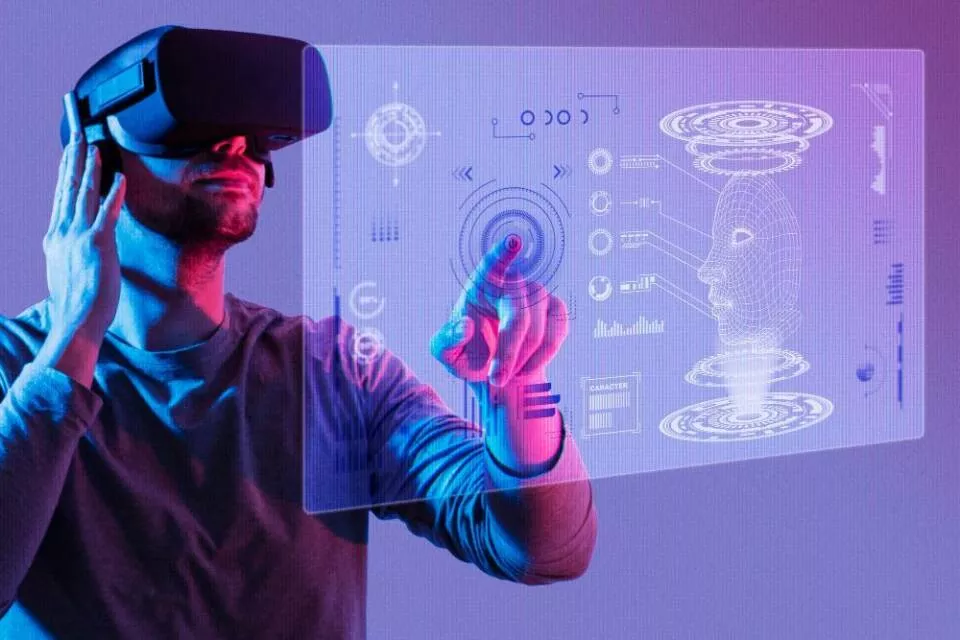Virtual reality is still very new, and it is primarily utilized for entertainment. The technologyâs goal is to immerse users in nearly real-life experiences in a virtual setting. It can be an excellent technology if applied in science education.
It can be a tool for delivering game-based education in science subjects. VR can help increase learning interest in students. It can help create curiosity in learners and understand concepts fast. The benefits of VR in education can be immense.
Why should we use virtual reality in education?Â
VR in education makes learning both immersive and experimental. Science students need to learn to experiment with things to get different outcomes. When they use VR, even the most complex concepts become easier to understand.Â
The technology provides a platform for building greater knowledge. When it is applied properly, VR can transform university learning experiences and student engagement. Educators should integrate it into education due to the benefits it provides.Â
Virtual reality is a resourceful technology that improves learning experiences. When writing papers, a student should consider using online resources for help. There are people who write essays for money and are always willing to help. A student can engage people who write essays for money when they want to get better grades or save time. They are another important resource for college and university assignment writing.Â
Improving learner engagement and inspiration. When teaching about the solar system, for example, all that a student can do is imagine. When VR is applied, they get immersed in the entire system. They become more engaged and inspired by the experience.Â
Better memory. College learners sometimes forget what they learn fast. VR immerses them into almost real-life situations. Many days later, they can still remember the topic and the lessons learned.Â
Boosting course outcomes. Educators can boost course outcomes by giving students writing assignments. VR can help boost the outcomes to higher levels. Â
Building student socialization and collaboration. Collaboration between teachers and students as well as between students is essential to learning in college. To enhance their mental health, students also require socializing. VR in college is one of the ways to enhance collaboration and socialization.Â
How VR is used in education
More and more schools are integrating VR into their science courses. VR Technology can take them to different speciesâ habitats, the molecular world, or the electronic world. Virtual reality can be used in the classroom in different ways.Â
Investigate the world of science. Immerse students into the world of science. Let them experience the animal and plant kingdom in an entirely new way. Let them investigate different species and how they depend on each other.Â
Understanding internal human structure. They may explore the internal organs of humans and how each organ functions. If they are learning chemistry, help them explore the structures of chemicals and their properties. It will give them a memorable hands-on experience.Â
Understanding concepts. Sometimes it is hard for a student to understand how some concepts work. Concepts such as friction, floatation, gravity, and rotation. Immerse the learners into 3D environments where they can experience the concepts at work.
Learning science language. Science language in the university is different from the common language. Sometimes it might look complicated. Help students by immersing into a VR lesson where they learn science language. They will understand it better and will never forget it.
Challenges of integrating VR technology into science education
Although educators understand how virtual reality helps in education, they must be ready to deal with the challenges. At the same time, they should be prepared to leverage every opportunity it provides.Â
- Teacher training. Educators need to be trained to use VR in a science classroom. However, such training is often lacking in many institutions. This leaves teachers to experiment on using the technology which can be tough.
- Implementation costs. The initial implementation costs can be high and schools work with budgets. The university or college might consider implementing the project in phases.
- Technical issues. Students and teachers frequently lack the skills necessary to handle technical problems. If they do happen, they must wait for experts to arrive and fix them.
VR implementation and success in a science classroom
The university or college administrators need to work as a team with the teachers. They must agree on what needs to be done and set aside a budget. What follows should be teacher training. They must agree on the science content to use in VR and to use it.Â
The future for VR in science education stands strong. Its adoption in colleges is increasing. Innovators and developers are improving the technology. It might be normal in science courses in the future. It will provide learners with a better experience, and attract more students in science courses. It will help increase student interactions and engagement.Â
Conclusion
The use of VR in education is becoming popular. When applied in science courses, it can help improve understanding. Learners can become more curious and get inspired more. The technology faces different implementation and use challenges. They can be overcome by good planning and training of teachers.Â
Stay updated with all the insights.
Navigate news, 1 email day.
Subscribe to Qrius

